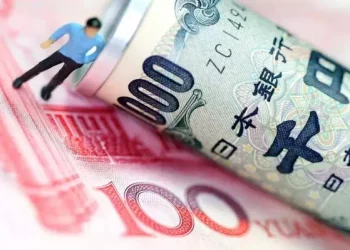The Indian Rupee (INR) continues to face pressure on Wednesday, extending its losses following the largest single-day drop in nearly three months during the previous session. The Reserve Bank of India (RBI) Monetary Policy Committee (MPC) unanimously voted to reduce the policy Repo Rate by 25 basis points (bps) to 6.00% during its April meeting. This marks the second consecutive rate cut, with the RBI shifting its stance from “neutral” to “accommodative” in a bid to support the ailing economy, which is also grappling with the impact of US tariffs.
The INR remains under strain, fueled by rising concerns over a global trade war that threatens to exacerbate economic challenges. Continued foreign capital outflows, coupled with strong demand for US Dollars from importers, foreign investors, and oil companies, have further weighed on the currency.
However, a recent decline in crude oil prices could provide some relief, as India is the world’s third-largest oil consumer, and falling oil prices tend to positively influence the value of the Indian Rupee.
RBI Rate Cut and Economic Forecasts Amid Tariff Uncertainty
RBI Governor Sanjay Malhotra stated that the Indian economy has made steady progress toward achieving price stability and sustained growth. Despite this, the RBI revised its growth forecast for FY26 downward to 6.5%, citing policy and trade uncertainties, including the impact of ongoing tariff threats from the US.
In addition to the repo rate cut, the RBI reduced the Standing Deposit Facility (SDF) rate to 5.75% and the Marginal Standing Facility (MSF) rate to 6.25%. Inflation projections for FY26 were lowered to 4%, down from the previous forecast of 4.2%.
Forex traders pointed out that the INR’s decline against the US Dollar is primarily driven by heightened demand for USD from importers and sustained foreign fund outflows from Indian equity markets. HSBC’s Chief India Economist, Pranjul Bhandari, anticipates additional rate cuts at the RBI’s upcoming meetings in April, June, and August.
US Trade Tensions Add to INR’s Pressure
US trade policy continues to be a significant factor in the INR’s weakness. On Tuesday, US Customs and Border Protection announced it would begin collecting tariffs from 86 US trade partners, intensifying concerns over a global trade war. While President Trump signaled he was open to negotiations, he reiterated his plans to proceed with additional tariffs on multiple countries.
The Federal Reserve’s stance on US interest rates remains uncertain. San Francisco Fed President Mary Daly stated there is no immediate need to cut rates, given the robustness of the US economy. However, Chicago Fed President Austan Goolsbee acknowledged the uncertainty surrounding the long-term effects of Trump’s tariffs on the economy.
Technical Outlook for USD/INR
The USD/INR pair continues its uptrend, moving above the 100-day Exponential Moving Average (EMA) on the daily chart. While the immediate resistance level is at 86.48, sustained bullish momentum could push the pair toward the psychological 87.00 level. The next key hurdle is at 87.53, which marks the high from February 28.
On the downside, support is found at the March 31 low of 85.42, with further support levels at 85.20 (April 3 low) and 85.00, the round figure. Given the current technical setup, further consolidation is possible in the near term, as the Relative Strength Index (RSI) hovers around the midline.
Related Topics:
























